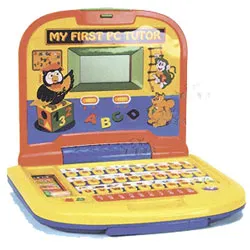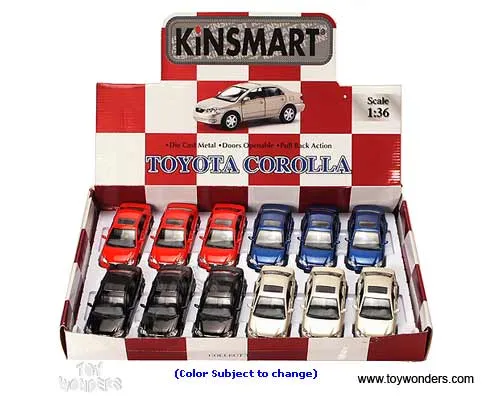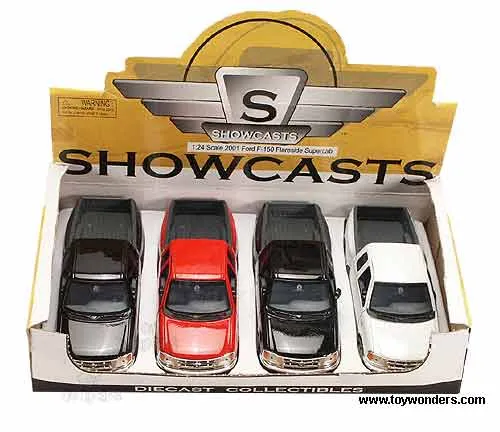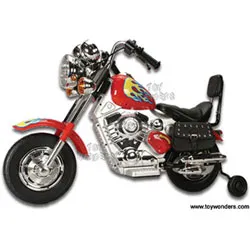The World of Diecast Toys
Diecast toys have captivated collectors and enthusiasts for generations. These miniature marvels, meticulously crafted from metal, plastic, and other materials, offer a tangible link to the automotive world and beyond. Whether you are a seasoned collector or a curious beginner, the world of diecast toys is a fascinating realm of craftsmanship, history, and investment potential. Understanding the basics, from the materials used to the scale of the models, is crucial for anyone looking to delve into this engaging hobby. This guide will navigate the intricate world of diecast collectibles, uncovering essential secrets and providing valuable insights for enthusiasts of all levels. Prepare to embark on a journey through the captivating world of diecast toys, where miniature masterpieces await.
What are Diecast Collectibles
Diecast collectibles are miniature replicas of vehicles, aircraft, and other objects, typically made from a metal alloy. The ‘diecast’ process involves pouring molten metal into molds to create highly detailed models. These toys are not just playthings they are prized collectibles that celebrate engineering, design, and the history of transportation. They come in various scales, ranging from 1:64 to 1:12 or even larger, allowing collectors to find models that fit their preferences and display spaces. The level of detail and the materials used contribute to the value and appeal of these collectibles, making them cherished items for both casual fans and serious investors. Diecast models range from cars and trucks to airplanes and construction equipment.
The Materials Used

The primary material used in diecast models is a metal alloy, often zinc, tin, and sometimes aluminum. This alloy gives the models their weight and durability. Other materials, such as plastic and rubber, are incorporated for various components, including the tires, windows, and interior details. High-quality models often feature intricate details, such as working doors, steerable wheels, and realistic paint finishes. The combination of materials and the precision with which they are assembled contribute to the overall quality and collectibility of the diecast model. The choice of materials and the manufacturing process can also greatly impact the model’s value and longevity.
Scale and Measurement Basics
Understanding scale is essential for diecast collectors. The scale refers to the ratio between the model’s size and the actual object’s size. Common scales include 1:18, 1:24, 1:43, and 1:64, among others. For example, a 1:18 scale model is 1/18th the size of the original vehicle. These scales allow collectors to build diverse collections without needing excessive space. Knowing the scale is important for choosing models that fit display preferences and comparing models of different sizes. Different scales offer different levels of detail, with larger scales generally allowing for more intricate features. Being familiar with scales ensures that collectors can make informed decisions when purchasing diecast models and that they can compare the relative sizes of different models in their collection.
10 Secrets Revealed
Authenticity & Value

Determining the authenticity and value of diecast toys is crucial. Collectors should look for official markings, detailed features, and original packaging to verify authenticity. The value is influenced by the model’s rarity, condition, and brand. Limited-edition models and those in pristine condition are often more valuable. Researching market prices and comparing models can help assess the value of specific items. Websites, auction houses, and collector communities are valuable resources for valuation. Understanding the factors that impact value, such as age, manufacturer, and historical significance, can help collectors build and maintain a valuable collection.
Where to Buy Diecast Toys
Diecast toys are available from a variety of sources. Online marketplaces, specialty shops, and toy stores are common places to find them. Auctions and collector shows offer opportunities to find rare and vintage models. Consider the reputation of the seller and the authenticity of the product when purchasing. Online stores often provide broader selections and competitive prices, while local shops can offer personalized advice and the chance to inspect models in person. Attending collector shows and joining online forums can also provide opportunities to connect with other enthusiasts, trade models, and find unique additions for your collection.
Display and Storage
Proper display and storage are essential for preserving and showcasing your diecast collection. Display cases protect models from dust, sunlight, and accidental damage. Consider the aesthetics of your display and how it complements your models. Store models in a cool, dry place away from direct sunlight to prevent fading and damage. Individual cases or boxes provide additional protection for valuable or fragile models. Organizing your collection thematically or by brand can enhance its visual appeal. Proper display ensures your collection remains a source of pride and enjoyment while preserving its value.
Cleaning and Maintenance

Regular cleaning and maintenance will keep your diecast toys in prime condition. Use a soft cloth or brush to remove dust and debris. Avoid harsh chemicals and abrasive cleaners that could damage the paint or details. Minor repairs, such as replacing tires or fixing loose parts, can often be performed with care. Consulting specialized guides or online resources can provide helpful maintenance tips. Proper maintenance will keep your models looking their best, preserving their value and enhancing your enjoyment of your collection for many years to come. Regular inspection can help identify any potential issues early on, preventing more extensive damage.
Common Mistakes to Avoid
New collectors should avoid several common mistakes. Overspending on the first purchase or buying models without proper research can lead to disappointment. Overlooking the condition of a model or ignoring its authenticity can also cause problems. Failing to properly store and display models can lead to damage. Becoming over-enthusiastic about one particular brand and ignoring other options can be limiting. By avoiding these pitfalls and educating themselves on the best practices, collectors can build a fulfilling and valuable collection. Taking your time, researching your purchases, and consulting experienced collectors are all recommended steps.
The Most Popular Diecast Brands
Several brands have earned reputations for quality and collectibility. Some of the most popular brands include Hot Wheels, Matchbox, Autoart, and Minichamps. Each brand offers unique styles, scales, and levels of detail. Researching different brands is important to finding those that align with your collecting interests and budget. The popularity of a brand can influence the model’s value and availability. Collectors often specialize in certain brands or models, building an in-depth knowledge of the brand’s history, production, and variations. Consider the brand’s history, the quality of their models, and their overall appeal to find the most suitable brands for your collection.
The Future of Diecast Toys

Investment Potential
Diecast toys can offer significant investment potential. Certain rare or limited-edition models appreciate over time, increasing in value. Collecting specific brands, models, or eras can provide lucrative returns. Market trends, collector demand, and the model’s condition all influence investment potential. Researching the market, staying informed of trends, and consulting with experts can help you make informed investment decisions. Building a collection with investment potential requires patience, knowledge, and a keen eye for detail. The investment value depends on various factors, so careful planning is critical. Considering historical trends and future demand is key.
Trends in the Diecast Hobby
The diecast hobby is constantly evolving, with new trends emerging. Customization, building models from scratch, and community engagement are becoming increasingly popular. Collectors are now actively involved in customizing and modifying models, expressing their creativity and enhancing their collection’s uniqueness. The increasing popularity of online forums and social media groups has fostered a vibrant community. By staying informed about the latest trends and embracing new techniques, collectors can expand their knowledge, enjoy the hobby more, and increase the value of their collections. Embracing the trends can greatly influence the enjoyment and success of this pastime. The hobby’s future promises continued innovation and excitement.
In conclusion, the world of diecast toys offers a rich tapestry of history, craftsmanship, and investment potential. By understanding the fundamentals of collecting, from materials and scales to authenticity and value, enthusiasts can build a satisfying and rewarding collection. Whether you’re drawn to the thrill of the hunt, the beauty of miniature engineering, or the investment potential, the world of diecast collectibles has something for everyone. With the knowledge and passion, you can navigate this fascinating hobby and build a collection that brings you joy for years to come. Embrace the secrets revealed in this guide, and embark on an exciting journey into the world of diecast toys.
